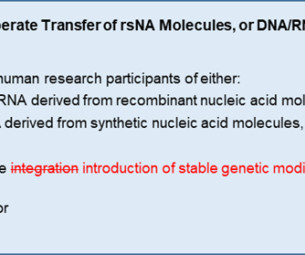The Importance of Hazard Communications in Clinical Trials Involving Genetic Engineering
Advarra
JUNE 13, 2024
When working with an unfamiliar IP, clinical personnel are likely looking for answers to three main questions: What are the risks associated with this IP? Replication-incompetent Agents Many viral vectors used in clinical trials today are genetically engineered with safeguards to render them replication-incompetent.













Let's personalize your content